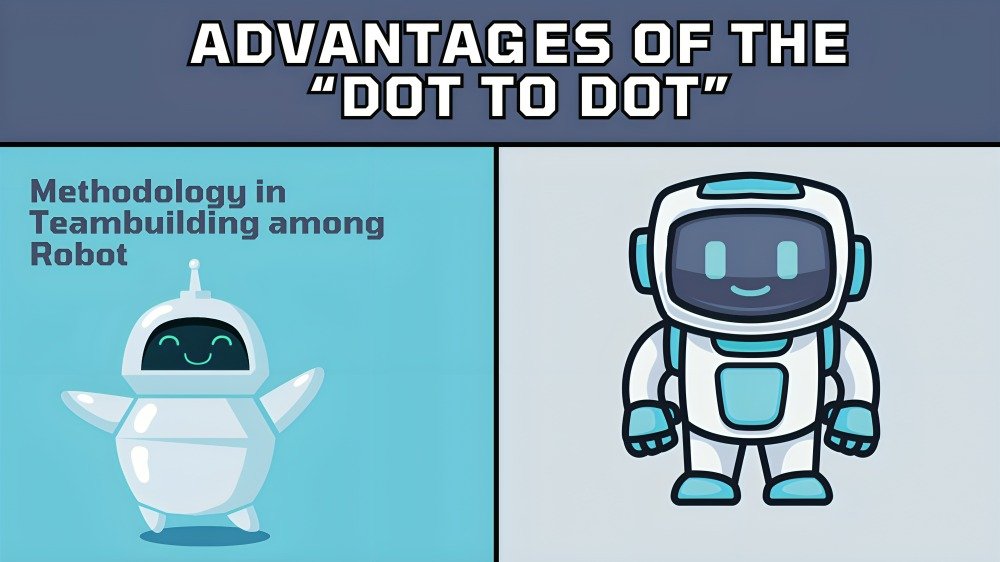The field of robotics is progressing more and more revealing new approaches and tools that help expand this interesting area for those interested in learning it regardless of their age. One such creative ideas that come to me is what is called “Robots Dot to Dot Nattapong,” which is a form of art that combines the ease of dot to dot forms and the relative difficulty of robotics. This method was developed by an individual dubbed Nattapong Its popularity has gained traction ensuring that teaching and learning of robotics becomes an interesting activity for children and the grownups. In this article we will explore robots dot to dot nattapong.
The Term “Dot to Dot” in the Field of Robotics
Dot To Dot is an art which is used by many people in adjoining dot to dot which results in creating amazing figures. Robots Dot To Dot Nattapong is an art which refers to dot to dot art along with Nattapong who is a popular artist from Thailand. This dot to dot nattapong art simply means alignment of dot to dot art with Nattapong’s name who is globally popular with his premium work.
Meet Nattapong: The Innovator Behind the Method
Nattapong is a name that has become very popular within a short while when it comes to robotics in education. Though a civil engineer by profession and a teacher by heart, Nattapong has overcome the barriers of robotics education with a series of tools, based on the “dot to dot” method. He is interested in producing simple models which help to transform complicated concepts into manageable forms by making them simpler for even lower level learners and students.
Nattapong’s philosophy is rooted in the belief that robotics should be accessible to everyone, regardless of their age or experience level. By breaking down complex robotic systems into smaller, digestible parts, he has created a method that is not only educational but also fun and engaging. Nattapong’s approach ensures that students grasp the fundamental principles of robotics before moving on to more sophisticated topics.
How “Robots Dot to Dot Nattapong” Transforms Learning
The “Robots Dot to Dot Nattapong” approach is multifaceted, incorporating various elements that enhance the learning experience. These include:
- Educational Kits: Some of the kits that Nattapong has created are complete kits which include all the parts that are required to build a robot, and a blueprint, which the students are required to follow. The dots shown in the template represent particular elements of the robot; by following this pattern students can model the robot in stages. This method helps students appreciate what each component does, before moving to the next student.
- Interactive Learning Materials: In addition to the kits, Nattapong has produced a series of appealing books and other useful items such as DVDs, CDs, and so on. These materials contain clear description of each step, extra information and problems related to this step. Due to the fact that many of them are presented in an interactive manner, students are able to focus on the lesson and have fun at the same time.
- Workshops and Classes: Nattapong teaches workshops and classes to students so that they can develop dot-to-dot robotics with his help. This means that during these sessions you are able to apply the knowledge that has been imparted and you are able to ask questions and this is followed by the provision of immediate feedback. These workshops are also effective in maintaining a teamwork form of learning and hence create a learners’ community.
- Online Community: Knowing the necessity of further encouraging people and learning, Nattapong has developed a web service that allows students and teachers to share projects, ask questions and suggest new ideas. This is a good platform for the continuous learning and drawing of inspiration from this online community.
Advantages of the “Dot to Dot” Methodology in Teambuilding among Robots

The “dot to dot” method offers numerous benefits, particularly in the context of robotics education:
- Simplified Learning Process: Unlike other methods, this one simplifies large robotic systems into smaller components and thus the learning process is not overwhelming. Students can spare their time to learn one part at a given time thus gaining a deeper understanding of the content.
- Increased Engagement: This makes the dot-to-dot approach interesting because students are always ‘doing’ something and definitely would not like the process to end. Just seeing how the robot appears with every step makes the process enjoyable and fulfilling, and thus students should continue learning.
- Development of Problem-Solving Skills: Through the dot-to-dot patterns students are enabled to apply tactical problem solving skills. They learn how to solve problems as they come and this is a quality which is relevant in any field including robotics.
- Better Retention of Knowledge: The performance presentation approach makes sure that students engage with each area of topic exhaustively before proceeding. Thus this process of systematic learning results in improved retention and mastery of knowledge in robotics.
- Inclusivity and Accessibility: The following is Nattapong’s method of teaching which is more suitable for learners of all ages and levels of learning. Both to those who have no prior experience interacting with robots and to those who have some experience, the series of instructions presented in the form of a dot-to-dot list is very easy to follow.
Application of “Robots Dot to Dot Nattapong” in Real-Life Scenarios
It may also be important to note that all the concepts that can be gathered out of the “Robots Dot to Dot Nattapong” have real life implications as well. Those pupils who strengthen these elements of knowledge can use them in more complex works on robotics, their participation in robotics competitions or on receiving further education in the sphere of engineering and technologies.
Besides in robotics, thinking in this approach enhances problem solving skills, creativity and critical thinking which can be applied in almost all disciplines. Irrespective of whether students are likely to work as engineers, programmers or as successful entrepreneurs in the future, dot-to-dot robotics skills will be most helpful to them in future endeavors.
Looking Ahead
Thus, more and more the question appears of the effectiveness of education with robotics, as the breakthroughs in the field of technology grow day by day. The “Robots Dot to Dot Nattapong” approach is ready and willing to be one of those helping hands that will shape that future, and give our future inventors a good start. Nattapong is constantly exploring for new kits and materials which contain innovative and recent technologies in relation to robotics and makes sure that techniques he teaches are accurate.
Conclusion:
The “Robots Dot to Dot Nattapong” method can be considered as one of the most valuable and effective approaches to teaching robotics as it is both easy to understand and at the same time it poses significant depth. Instead of just explaining concepts in robots which might take a lot of time, through his initiatives, Nattapong is also encouraging people, particularly the students to learn more.
Also read About:










